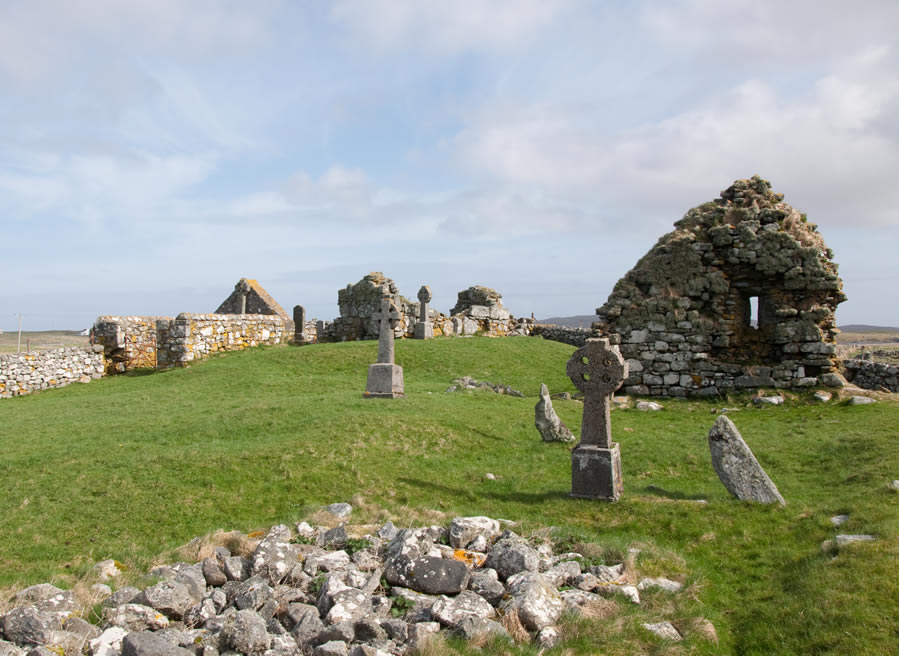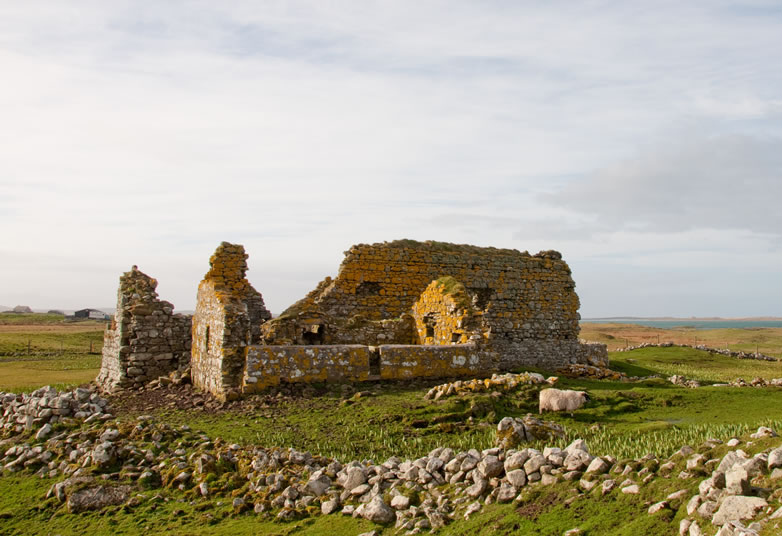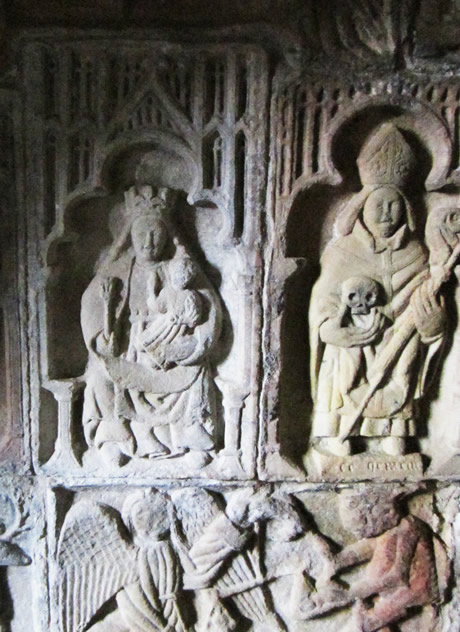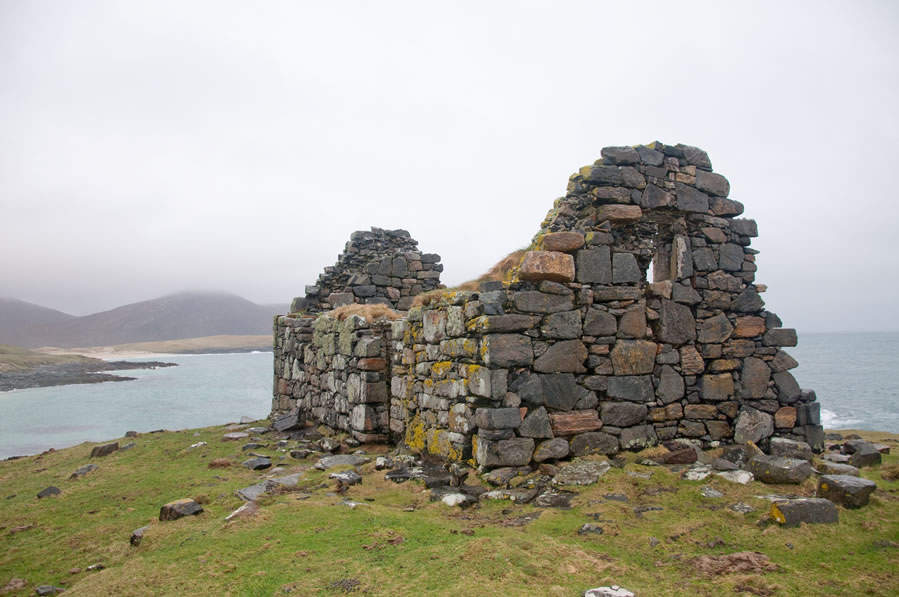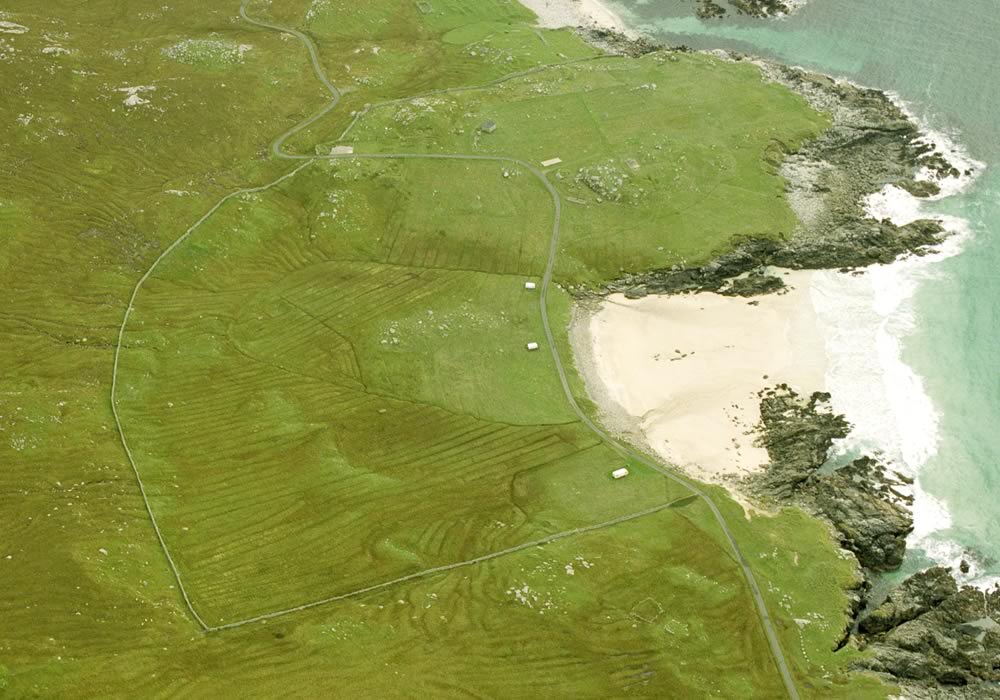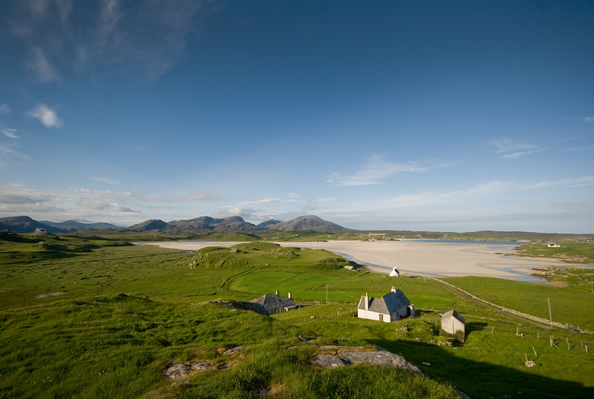9.11 Kilbar Church, Barra
Cill Bharra is the remains of a 12th century church dedicated to St Barr. The site is thought to have been used for Christian worship since the 600s when there was a chapel here dedicated to St Barr – probably the same saint as St Finbarr of Cork.
Parts of the north and south walls of Kilbar Church are still standing. You can see the remains of the original door in the north wall. Alongside there is one remaining ruined wall of another chapel dating from the 1400s.
The North Chapel was probably built in the 16th century and is the only roofed building left on the site. Inside there is replica of the Kilbar Stone which dates from some time between 900 and 1100.
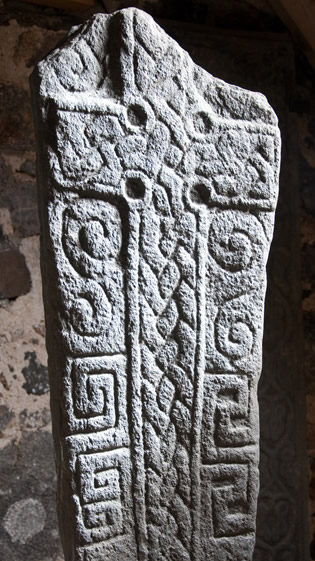
On one side there is a Christian cross. On the rear is an inscription in Nordic runes written from top to bottom in three lines. The runes are transcribed as:-
…(t)ir·þ:ur·kirþu:s(t)in(a)r …r·is·kurs:sia(:)rstr …(k)a
making the sentence:-
…eftir Þorgerðu Steinar’s dóttur es kors sjá reistr
which translates as:-
‘In memory of Þorgerðr Steinarsdóttir is the cross raised’ or ‘This cross was raised in memory of Thorgerth, daughter of Steinar’.
Runes, ogham and latin were the three written scripts used during this period. Runes come from Scandinavia. Ogham was used by the Irish, Picts and Scots – an ogham inscription can be found at the Pictish fort of Dunadd. Latin was the language of the Christianity and spread with the faith. But most people could neither read nor write.
The cross is carved from local stone and is 1.36m high. The stone is unusual in combining both Christian and Nordic symbols. The Kilbar stone was found here but the original is now in the National Museum of Scotland.
The North Chapel also contains four graveslabs belonging to the MacNeill chiefs. These stones were carved by men from Iona and Oronsay and are similar in style to those found all along the west coast of Scotland. (See Iona, Kilmartin Church, Keills Chapel, Kilmory Knap Chapel in Argyll.)
Writing in 1703 in his ‘Description of the Western Isles’ Martin Martin says,
‘The natives have St. Barr’s wooden image standing on the altar, covered with linen in form of a shirt; all their greatest asseverations are by this saint. I came very early in the morning with an intention to see this image, but was disappointed; for the natives prevented me by carrying it away, lest I might take occasion to ridicule their superstition, as some Protestants have done formerly; and when I was gone it was again exposed on the altar.
Local tradition tells a story that St Barr was a follower of Colmcille who came to Barra to convert the islanders. A previous missionary had been burnt and eaten but St Barr managed to bring Christianity to Barra. When it was time for him to leave the island, St Barr prayed for the islanders and when he had gone, a statue was erected of him. In 1625, Father Cornelius Ward notes that he saw a statue of St Barr in the church at Kilbar. The islanders celebrated the saint’s day with a holiday from work and horse racing and shinty matches until the mid 19th century. By the mid 20th century, local people with friends or relatives buried at St Barr would still mark the saint’s day with a day of rest.



